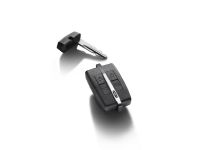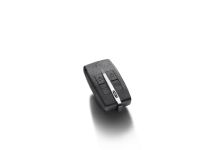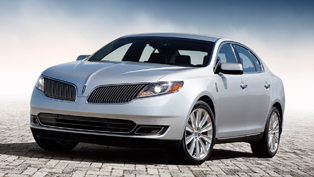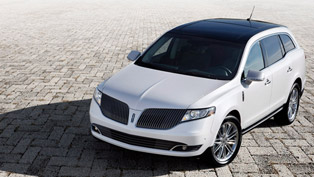Lincoln MKS features industry-exclusive securicode keyless entry
The scenario is simple. A Lincoln customer heads out to his vehicle following an early morning workout. His keys are locked securely in the car, tucked away in the center console. No sweat. As he approaches the vehicle and presses his finger to the glossy black B-pillar, a series of five glowing, red numbers appear. He enters a five-digit code, unlocks the doors and is on his way.
Sounds like a feature on a concept car, doesn't it? In reality, this remarkable technology is available on the 2009 Lincoln MKS, the first of many Lincoln products that will offer the Next-Generation SecuriCode™ Keyless Entry Keypad.
The keypad shares its technology with the iPod and iPhone, using the same supplier, Quantum Research, for the processors and algorithms.
Touch-sensitive electronics are mounted behind a sturdy acrylic cover. The door applique is made via a two-shot injection molding process. The clear acrylic, with a 40 percent black tint, is shot first, followed by the black acrylic that makes the shape of the B-pillar applique.
The electronics mount behind the B-pillar applique. The graphic panel is the same color black as the B-pillar, blending the entire unit together making it nearly invisible.
"Making it totally invisible was impossible," said Dalminder "Sonny" Minhas, core engineer for the project. "Besides, the customer needs to be able to find it to use it."
Minhas also made sure that system holds up to Lincoln's strict durability requirements. Unlike most iPods or iPhones, the MKS is exposed to extreme weather conditions and temperature swings - year in and year out.
"The main challenges were moisture - from soapy water as well as finger touches," said Minhas. "People often forget that the human body is made up of 60 percent water, so the touch of a finger provides a lot of moisture."
Minhas put the keypad through an extensive series of customized tests to ensure that the technology will perform its duties in any conditions.
Chemical testing involved covering the buttons with the same types of products that customers use everyday to gauge how they will affect the keypad's functions. Minhas sprayed the unit with car wax, windshield washer fluid, car wash soap, window cleaner and Armor All. The SecuriCode™ keypad also was bathed in suntan lotion and hand lotion, passing with flying colors.
Rain and water-flow testing was performed to ensure that the keypad buttons are only activated by the customer and not by rain drops. The system was flooded with more than 3.2 liters of water per minute over a 10 minute period without any inadvertent activation.
Thermal tests evaluated the effects of high and low temperature on the keypad along with the buildup of frost that can accumulate during cold temperatures.
In these tests, the keypad was placed in a thermal chamber and tested from -40 to 185 degrees Fahrenheit to ensure it will work properly on July days in Phoenix as well as cold January days in Minneapolis.
In addition, the keypads were subjected to a battery of tests addressing vibration, thermal shock, durability (50,000 cycles for each button), salt spray, dust, mechanical shock, shelf life, water immersion along with extensive tests for the electronic components and connectors. The units also are validated for safe shipping to the factory for installation on the 2009 Lincoln MKS.









